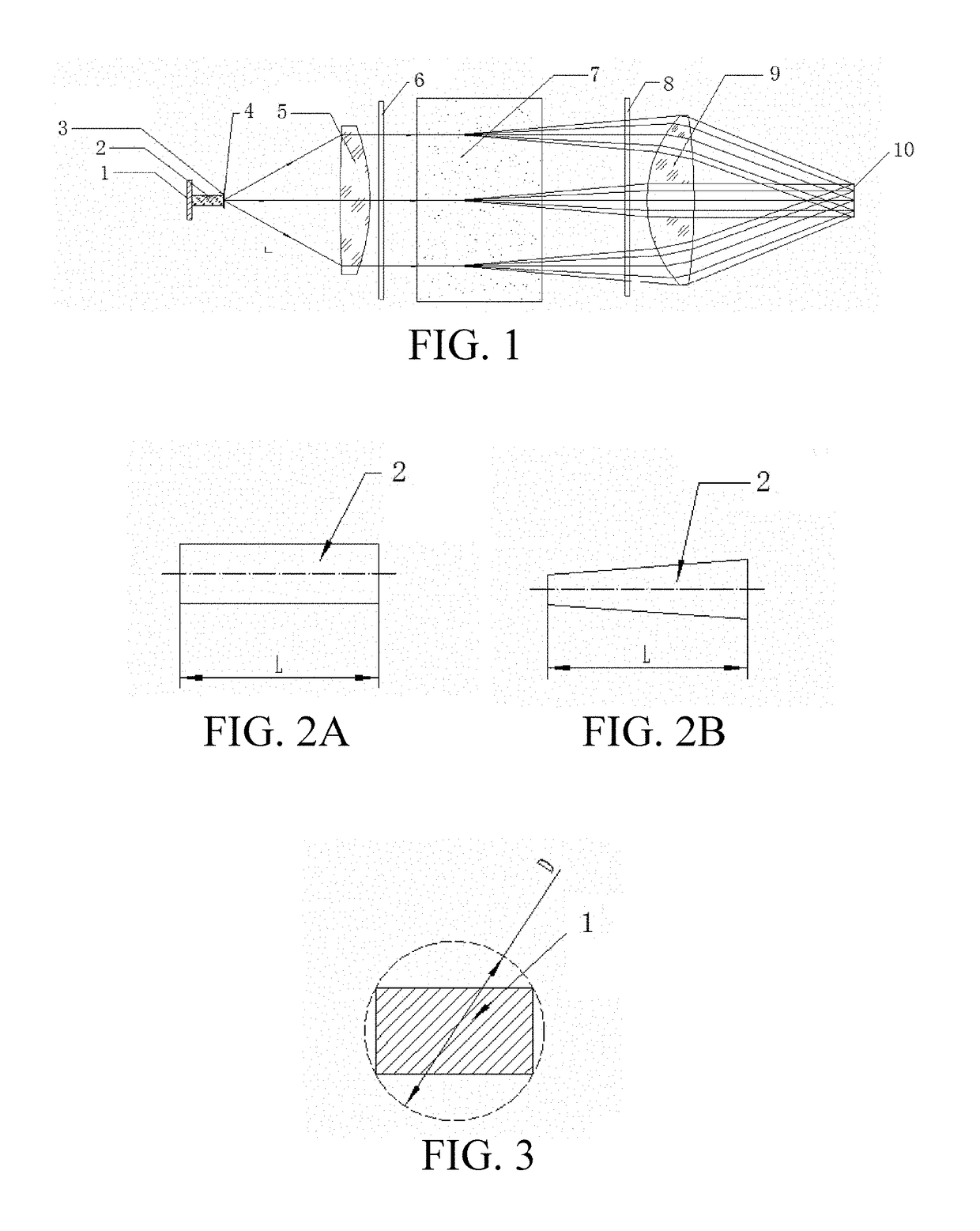Telecentric illumination and photographing system for detection of marine microscopic organisms
a technology of telecentric illumination and photographing system, which is applied in the field of illumination and imaging technology, can solve the problems of many adverse effects on the observation of microscopic organisms, vague imaging, and many technical problems of microscopic organism research by technical means, and achieve the effects of high reliability, high uniformity, and extremely uniform illumination of imaging surfaces
- Summary
- Abstract
- Description
- Claims
- Application Information
AI Technical Summary
Benefits of technology
Problems solved by technology
Method used
Image
Examples
Embodiment Construction
[0052]Embodiments of the present application are described in detail below. It should be emphasized that the following descriptions are merely exemplary and are not intended to limit the scope and application of the present invention.
[0053]Referring to FIG. 1, in an embodiment, a telecentric illumination and photographing system for detection of marine microscopic organisms includes an optical path module and an illumination drive module. The optical path module includes an LED light source 1, a light homogenizing rod 2, a decoherence light homogenizing sheet 3, a diaphragm 4, a telecentric collimation camera 5, and a telecentric imaging camera 9. The LED light source 1 provides an illumination light source. The light homogenizing rod 2 mixes light beams emitted from the LED light source 1 to obtain uniform light intensity distribution. The decoherence light homogenizing sheet 3 performs secondary light homogenization on a light beam emitted from an end surface of the light homogeni...
PUM
 Login to View More
Login to View More Abstract
Description
Claims
Application Information
 Login to View More
Login to View More - R&D
- Intellectual Property
- Life Sciences
- Materials
- Tech Scout
- Unparalleled Data Quality
- Higher Quality Content
- 60% Fewer Hallucinations
Browse by: Latest US Patents, China's latest patents, Technical Efficacy Thesaurus, Application Domain, Technology Topic, Popular Technical Reports.
© 2025 PatSnap. All rights reserved.Legal|Privacy policy|Modern Slavery Act Transparency Statement|Sitemap|About US| Contact US: help@patsnap.com



